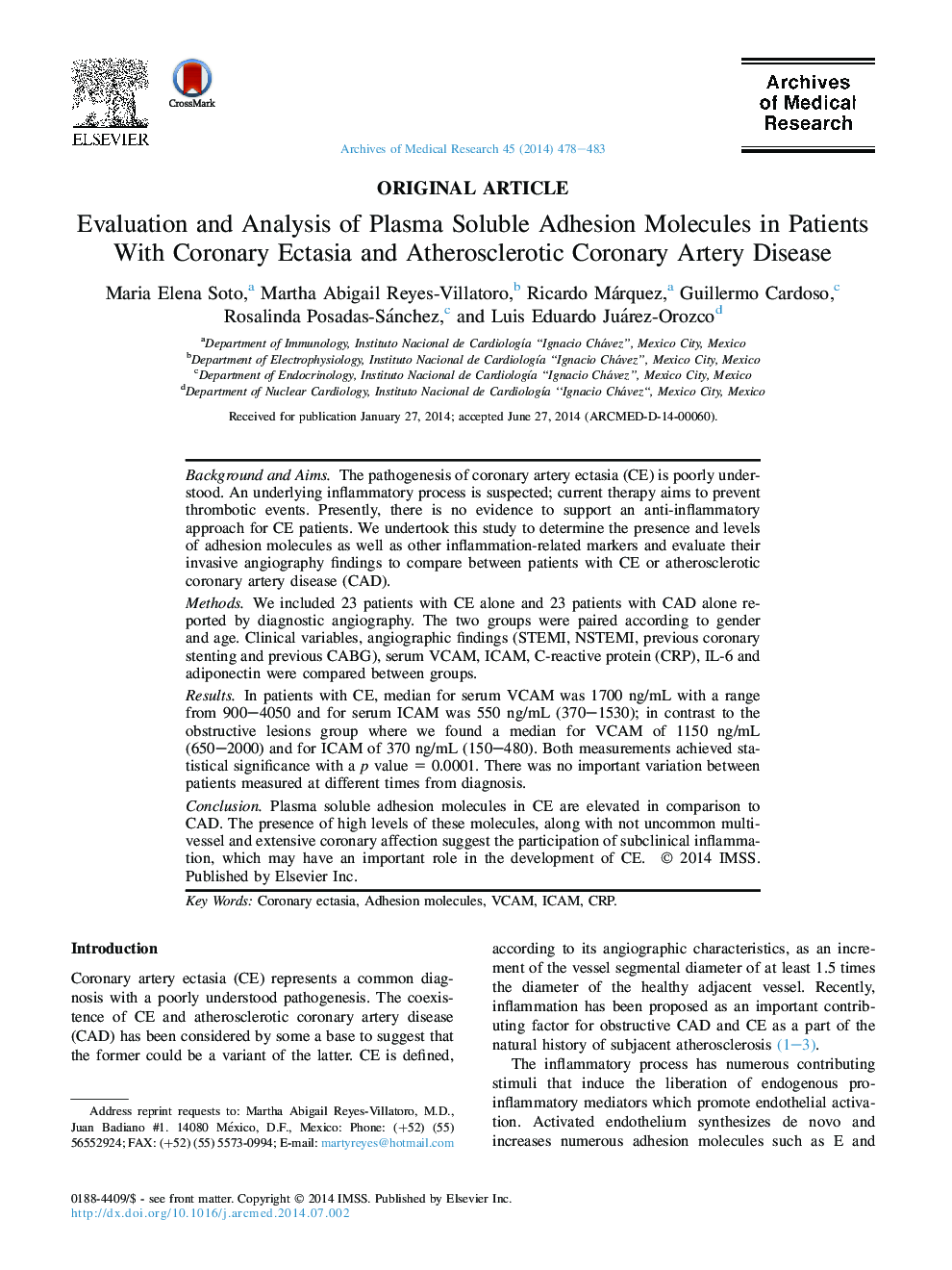| Article ID | Journal | Published Year | Pages | File Type |
|---|---|---|---|---|
| 3446521 | Archives of Medical Research | 2014 | 6 Pages |
Background and AimsThe pathogenesis of coronary artery ectasia (CE) is poorly understood. An underlying inflammatory process is suspected; current therapy aims to prevent thrombotic events. Presently, there is no evidence to support an anti-inflammatory approach for CE patients. We undertook this study to determine the presence and levels of adhesion molecules as well as other inflammation-related markers and evaluate their invasive angiography findings to compare between patients with CE or atherosclerotic coronary artery disease (CAD).MethodsWe included 23 patients with CE alone and 23 patients with CAD alone reported by diagnostic angiography. The two groups were paired according to gender and age. Clinical variables, angiographic findings (STEMI, NSTEMI, previous coronary stenting and previous CABG), serum VCAM, ICAM, C-reactive protein (CRP), IL-6 and adiponectin were compared between groups.ResultsIn patients with CE, median for serum VCAM was 1700 ng/mL with a range from 900–4050 and for serum ICAM was 550 ng/mL (370–1530); in contrast to the obstructive lesions group where we found a median for VCAM of 1150 ng/mL (650–2000) and for ICAM of 370 ng/mL (150–480). Both measurements achieved statistical significance with a p value = 0.0001. There was no important variation between patients measured at different times from diagnosis.ConclusionPlasma soluble adhesion molecules in CE are elevated in comparison to CAD. The presence of high levels of these molecules, along with not uncommon multivessel and extensive coronary affection suggest the participation of subclinical inflammation, which may have an important role in the development of CE.
